The New Routine
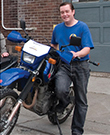
Not an exciting title but like Andy, Kyle and Bruce have touched on, the routine is setting in. The initial excitement and fear of the unknown is being replaced by the relaxed routine of Winter commuting.
The first time you try something new and unusual, your mind tells you that the activity is overly risky. At least mine did. The first ride seemed as far out as if we were planning a 100 mile trek in the Arctic. Only somewhat unstable minds would consider such a foolish activity as riding a lightly studded electric motorcycle all Winter in Duluth.
My initial feelings as I rode was that I was doing something strange, weird or wrong. Maybe all of the above. As I rode past police officers I felt somehow guilty and thought I would get pulled over and get a good talking to by an officer about my foolish and dangerous behavior. If I fell in traffic and caused a scene would I be ticketed?
When a car driver goes too fast on a snowy road and ends up in the ditch, police and first responders come to their aid. Usually no lectures about traveling too fast for conditions. Going into the ditch is just a part of what occasionally happens during the Winter driving season. Generally no one thinks of the driver as being irresponsible. My guess is that it is so common that people are just used to it and don’t react anymore. Would it be the same if a Winter motorcycle commuter had a fall in traffic and police and first responders were needed?
Some years ago a customer who had ridden hundreds of miles in the Winter from Canada was on his way to visit us in Duluth and had a fall downtown on our bricked streets. He had navigated far more challenging road conditions for hundreds of miles and followed that with an easily avoidable fall. I know how it happens from falls during my road racing years. We get too comfortable at times and let our guard down so we don’t see the continuing risk or don’t recognize the risk.
Bricks and studded motorcycle tires are a bad combination. I spun a tire on the Zero once when I thought I was only lightly accelerating. Once the traction breaks the studded tire spins easily on brick. If I had been leaning even a little, I could have gone down like our customer did. Winter riding requires a more careful observation of surface types than warm weather riding does.
Fortunately our customer was not hurt. He needed rescue only because of a broken lever and gave us a call. I was the leader of our customer service area at that time and his call was transferred to me. We had an old lift gate cube truck at the time that could retrieve his motorcycle so I headed downtown to lend a hand.
He had his motorcycle out of traffic and no scene had developed. We quickly loaded his bike and were off in less than 10 minutes. How is that for customer service! Back at Aerostich we put his bike in our garage and he made calls to get parts shipped to us for repair. It was one or two days before he departed in his Roadcrafter Classic to his next destination in the states. We do our best to take care of our customers as they are the reason we are in business and we appreciate them very much. Our garage has been used by riders many times for motorcycle repairs and was recently converted into a riders’ lounge that doubles as a garage.
Motorcycles are legally licensed vehicles that have the same rights and restrictions in traffic and on roads that cars do. It is legal to use motorcycles and cars all year round. The range of conditions a motorcycle can be safely operated in however are not the same as a car. When I rode in a light snowstorm, I wasn’t comfortable in traffic as I couldn’t easily keep up with the cars and I had to concentrate very hard to keep the bike upright. It was a scary and adrenaline producing experience. At my level of riding skill, the risk was too high in my opinion. If we have another heavier snow storm, I will take the cage to work.
My best estimate is that in Duluth you can safely commute about 70% of the Winter on a electric motorcycle. That is better than I had originally thought and certainly worth the effort of preparing a motorcycle. You need to be more aware of the weather conditions and forecast as you could get stuck at your destination due to heavy snow. If you have an important appointment, take the car that day. If you take out all the various unrideable days and circumstances where riding isn’t reasonable, you still have a significant majority of the Winter available for safe and fun commuting. Who would have thought!
Highway vs Surface Streets
Have you ever wondered if you get less wet when you ride in the rain at high speeds vs low speeds? Has anyone done computer modeling to find out the answer to this important question? A quick search shows that many others ponder this same question but mostly from a walking vs running perspective. The answer is complicated with many variables like wind speed, rain direction and raindrop size. Mythbusters says if you minimize the variables, you get wetter the faster you move through the rain. It's not an issue either way for me as my gear takes care of the water almost all the time.
How about how cold you get on a commute? How does speed factor into the equation? I have some insight here with years of early and late season commutes in cold weather. A recent commute on the highway at 21°F produced hands that were much colder than a previous -2°F commute at surface street speeds. My time on the motorcycle was 5 minutes less on the highway yet my hands were much colder.
Your body is limited in how fast it can create warmth in your extremities through circulating blood. The highway speeds and resulting high wind removes heat from your hands much faster than your body can replace it. At surface street speeds the heat is still being removed faster than your body can replace it but the rate of heat loss is less so your hands end up warmer at the end of your commute even though it took longer. Without hand guards to block the wind, the highway isn’t workable for me on the Zero in very cold weather. I have to stick with surface streets with our current Zero configuration.
Glove Types
I have tried three types of gloves so far and the best gloves are not the most insulated. Actually they are the least insulated of the three by thickness. The effectiveness of the insulation is likely playing a role here too.
Due to the use of heated grips, a glove with a thin palm area allows for more heat to transfer to my hands. The gloves I am using now are older Olympia cold weather motorcycle gloves. They are an all leather version of our Cold Weather Waterproof Glove (#1489). There is so much gear accumulated over decades of time that I thought something I had would work for this project. If I do this again, I will invest in a new set of motorcycle specific winter gloves to avoid most of the frozen finger experiences. I hear from Bruce that a glove liner makes a significant difference. Layering works both for body insulation and hand insulation. Adding a glove liner for the below zero days should do the trick.
A Longer Trip
It was time to try a trip longer than 7 miles on the Zero to see what was like. A Saturday day-long retreat next to a local frozen lake 15 miles away was the perfect opportunity. The weather was warm at 43°F so I didn’t turn on the hand warmers as I wanted to experience the Zero’s range.
With warm temps and clear roads, this was a typical ride in the Spring or Fall around Duluth. The sun was shining and I was grinning in my helmet within blocks of leaving home. The simplicity of riding the Zero makes the whole experience better. The throttle control for me is just so much fun! It is hard to describe why it is fun. The precision and linearity make you feel like you have more control than with a gas powered motorcycle. Sort of what I imagine it is like to fly a fighter jet. Extreme precision and control. It's a feeling of freedom.
For the first time I got to see what it feels like at higher speeds as I reached 70 MPH. People have asked me what I think is the equivalent engine CCs of the Zero based on how fast it accelerates. My best guess is about 700 CC. It clearly out accelerates my DR-650 Suzuki and my NT-650 Honda Hawk up to 70 MPH. The effect of speed on power consumption is similar to my gas motorcycles as efficiency quickly drops off at higher speeds. At 70 MPH you can see the battery percentage click down in almost real time. I slowed down some as I approached my destination to make sure I had enough battery charge to make it home. I was at 57% remaining when I arrived so I felt I had 7% to spare on the ride home.
The last block of the trip was on a slushy snow covered driveway leading to the edge of the lake. The very first part was quite steep and resulted in excessive rear wheel spin and fishtailing with little forward movement. There was too much potential for a fall so I decided to walk the Zero up the hill using the throttle to assist. I was a little winded by the time I got to the top of the hill but it worked out just fine. Try doing that with a gas powered bike while working the throttle and clutch for about a hundred feet uphill on snow.
Slushy snow is the biggest problem for our Zero setup. There really isn’t a good solution available as there is no firmness to the surface that will accept force without moving. Packed snow or fresh snow that packs easily and isn’t too deep are both fine as long as the hill slope is reasonable. On this trip I had to compromise riding for a short distance but it wasn’t a big deal.
On the way back to the road there was space in the driveway to build more speed to get up the hill but when I started going down the hill, now I couldn’t stop! I slid the locked up rear wheel down the hill and lightly used the front brake until I hit the pavement of the cross road where I could slow down. There were no cars on the road so things were fine but it was a little scary. If I had it to do over again I would have tried to keep my speed down earlier to see if I could ride down the hill with a controlled speed. Front end wash out would have been more likely so maybe my first instinct was the best choice.
Real Roadgrime
My Classic Roadcrafter has thousands of commuting days on it yet it looks pretty good. Seven mile short trips don’t build up layers of road grime and bugs like day long trips do. My suit is in “dirt stasis” where the rate of new grime accumulating on the suit is the same as the rate of grime leaving the suit. It happens in part when riding in the rain and part by the suit flexing as it moves and is taken off and put on. The bending of the fabric causes small bug splats to crack and fall off.
The suit doesn’t reflect how often it is used and really hurts my street cred. It makes me look like a poser who rides occasionally on warm dry days instead of a rider who keeps detailed spreadsheets of every day of the year with notes on weather conditions and the ridability of each day. I shouldn’t care, right? The satisfaction of doing “the right thing” should be enough. Who cares if anyone notices. All true and yet the cleanness of this suit still tweaks that little bit of pride I haven’t been able to purge from myself.
It has gotten worse since I added the Aerostich Road Grimed Astronaut patch to the left sleeve in all its white backgrounded splendor. Now the situation is worse as I have a super new looking patch on the sleeve bringing attention to the obvious fact that I ride so much that my suit look likes a Road Grimed Astronaut’s suit. But it doesn’t, the poser factor just went up.
Thankfully a leap day opportunity for real roadgrime presented itself when I rode to work on the Zero shortly after about an inch and a half of snow fell. It was warmer so the snow was mostly melted and the city road maintenance trucks had just dumped fresh salty ice melt on the roads. We refer to days like this as sloppy days in the Winter in Duluth. Everything gets covered in a layer of a mix of salt and sand. It gets so bad some days that it is hard to tell what color cars are. My Zero ride was during a mild sloppy day for Duluth but it still produced pretty good results on my suit.
There were spots of salt all over my suit and Aerostich Dispatch Bag from the rear tire of the Zero and from passing cars throwing up road spray. The lower legs of my suit took the brunt of the spray with a great coating of real roadgrime. Finally some street cred!
Bruce also let me try his Aerostich Electric Warmbib. I was impressed with how much heat it produced with very little bulk. I could wear it underneath my Darien TLTec Wind Blocker Fleece Liner and still have plenty of room in my Roadcrafter Classic. If my commute was double my current 7 miles I would use the Warmbib on the colder days. I’m seriously thinking of keeping one in my tank bag as insurance against unexpected cold weather any time of the year. The Warmbib packs very small.
The Two Seasons: Winter and Road Construction
That is the saying in Duluth. We have two seasons, Winter and Road Construction. Work has already begun filling pot holes that form in late Winter and early Spring. I took a new route to Aerostich on 4th street as I was getting bored with Superior St. 4th Street is in bad shape with a major construction project happening this year. It was a very rough ride as I was tossed in the air a few times as I rode over the “road” which looked like it was deserted for decades. The unexpected fun in this ride was seeing the surprised faces of our city road workers filling in the potholes. I was stealthily right in front of them suddenly as they couldn’t hear me coming. They looked up with a surprised look that quickly turned to a little grin like, “Ok, you got me. Nice joke.”
The Zero would need suspension work to make it more suitable for cold weather commuting. Roads in Duluth are well known for being in poor condition as our infrastructure base previously supported over 100,000 people. Now at about 89,000 people we don’t have the tax base to support the layout of our city as well as we would like. Duluth is an amazing city on the edge of an inland sea with beauty that is world class. Come move here and help us finance better roads!
My primary commuting motorcycle is a DR-650 Suzuki. Its long travel suspension is ideal for soaking up the rough road surfaces. It rides better than any 4 wheel vehicle no matter where I go in Duluth but I haven’t ridden it in temperatures like this ride at 9°F. The standard fluid in the forks and shock of the Zero gets too thick in the cold which results in a ride that feels like there is almost no suspension. They make specialized hydraulic fluid for aircraft that resists changes in viscosity caused by temperature. It is expensive but would be worth a try in the Zero as only a small quantity would be needed.
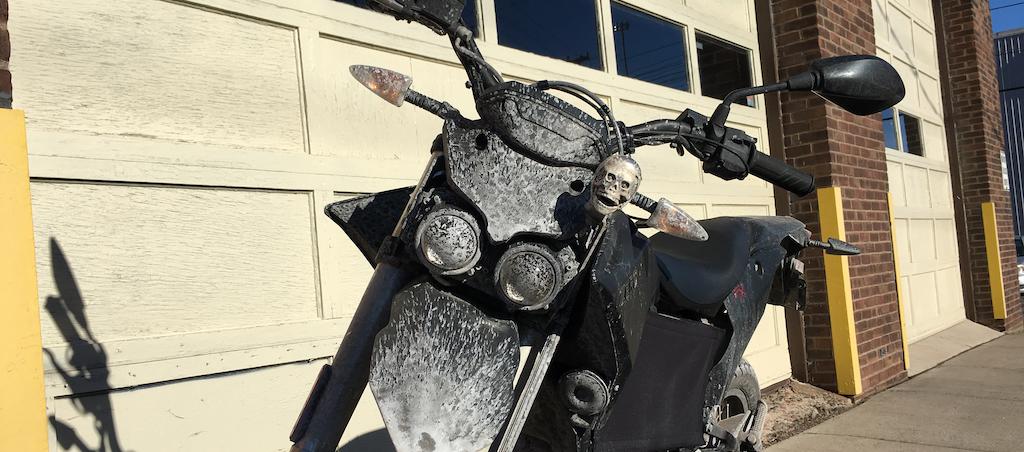
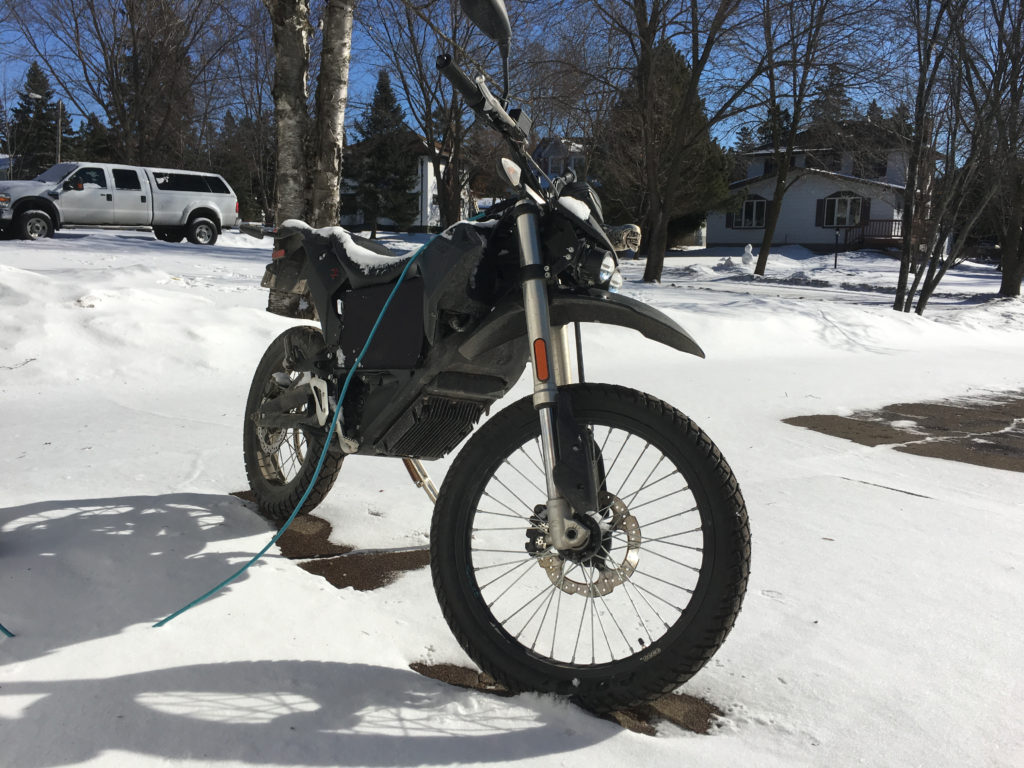
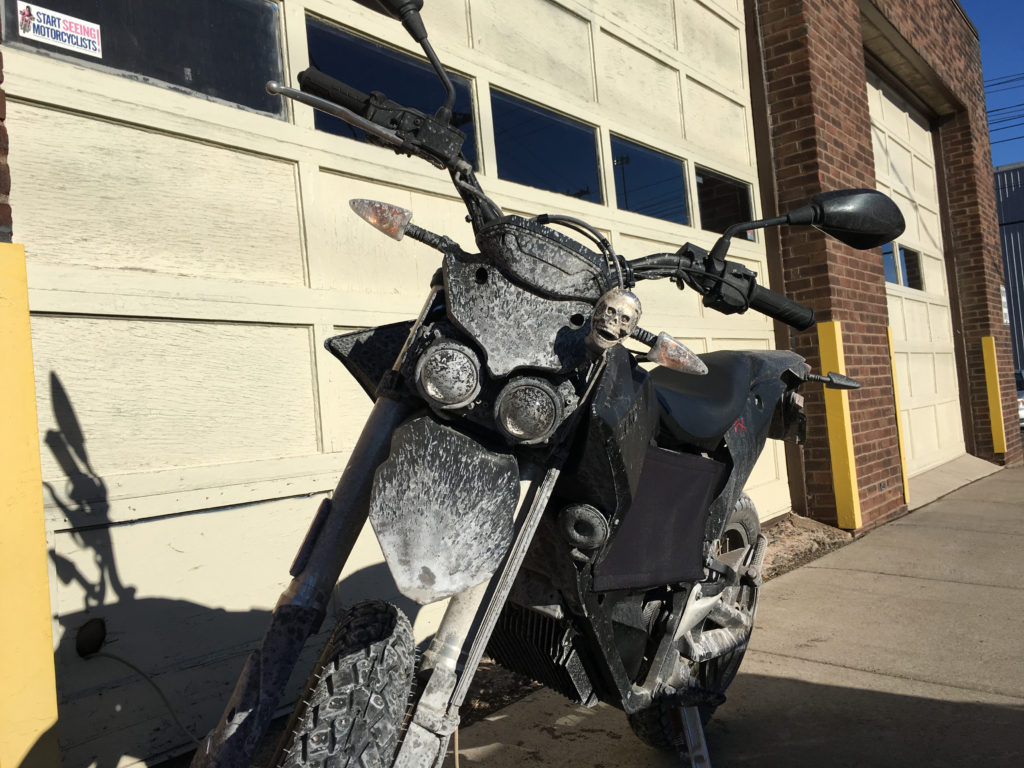
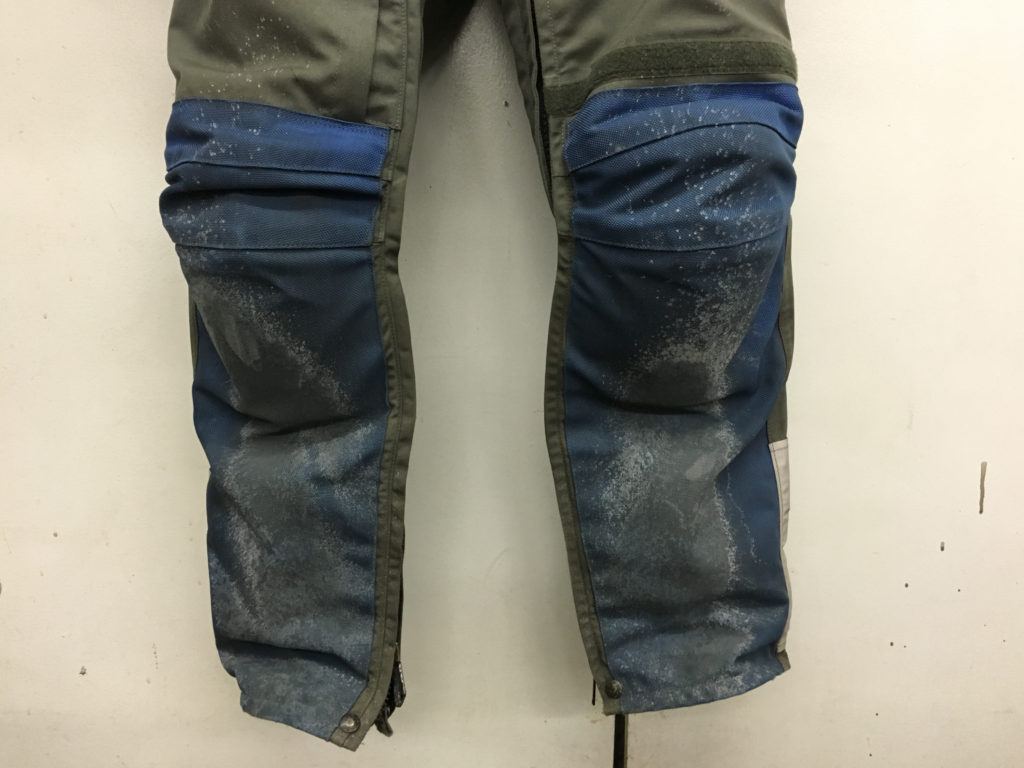
May I suggest a set of Hippo-Hands or equivalent to help with the heat loss on your hands.
I ride year round here in Winnipeg, and would be lost without them. Cheers!